CJ Alexander, the Hunter Who Killed a Potentially Record-Breaking Buck in Ohio, Is Now Under Investigation
According to the Ohio Department of Natural Resources, "wildlife officers have seized the antlers, cape, and hunting equipment associated with the alleged unlawful taking of the deer"
By Hayden Sammak
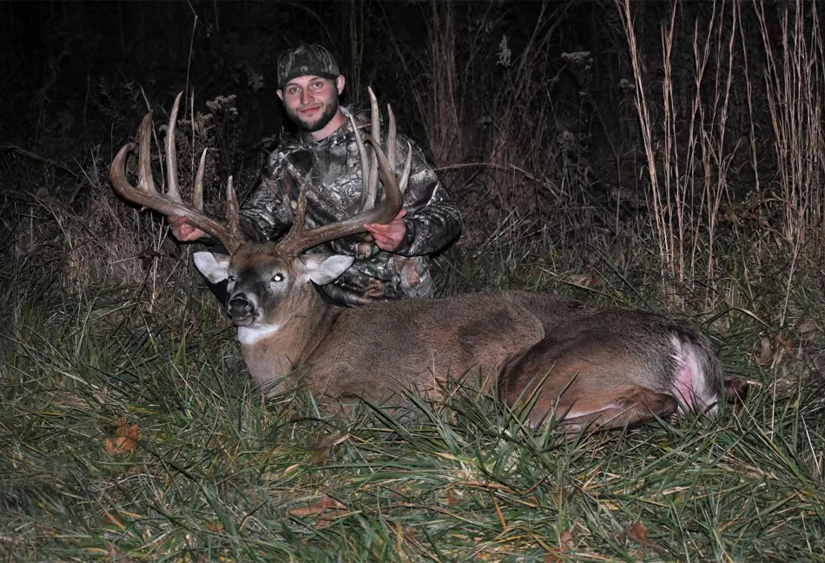
Amid a recent firestorm of poaching allegations surrounding a deer known as the Alexander Buck — a potentially record-breaking whitetail killed by Christopher “CJ” Alexander — the Ohio Department of Natural Resources has confirmed that they confiscated the deer from Alexander’s possession and have launched an investigation.
According to a DNR press release obtained by Outdoor Life:
Wildlife officers from the Ohio Department of Natural Resources (ODNR) Division of Wildlife are investigating a potential record deer taken during the archery hunting season in Clinton County, Ohio. The deer was reported to have allegedly been taken by Christopher J. Alexander, 28, of Wilmington, on Nov. 9, 2023.
An investigation was launched by the Ohio Department of Natural Resources after information was provided alleging that Alexander failed to obtain the lawfully required written permission prior to hunting on private property.
While the investigation continues, Ohio wildlife officers have seized the antlers, cape, and hunting equipment associated with the alleged unlawful taking of the deer.
As detailed in an earlier piece published by OL, Alexander claims to have legitimately harvested the potential record breaking buck on Nov. 9, 2023 within the boundaries of a 30-acre property owned by his sister. However, the location of where the buck was killed is now under question.
Some hunting forum posters have pointed out that Alexander says he recovered his buck during the daytime, however all the published photos of the deer were taken at night. Alexander told OL that he and friend Cory Haunert had waited for Haunert’s girlfriend to get off of work before taking pictures, since she had a quality camera.
Ohio’s Buckeye Big Buck Club secretary Mike Rex gave the buck a green score of 206 7 / 8 inches. With that preliminary score, the buck would have the potential to be the number one typical whitetail taken in the state of Ohio, and the number three typical whitetail taken in North America.
However, due to the Boone & Crockett Club’s common base rule, it’s unlikely that the rack would have earned such a high score in the B&C books (the G-2 and G-3 tines on the left antler appear to share a common base). But besides the scoring questions, there are now significant legal issues surrounding the rack and Alexander’s hunt.
According to Section 1531.201 of the Ohio Revised Code, anyone found guilty of illegally taking a deer over 125 inches gross score shall be ordered to pay a special restitution fee in addition to any restitution value established in division rule. This additional fine is calculated using the following formula: ((gross score – 100)² x $1.65). Should DNR officials find the Alexander buck’s widely reported gross score of 235 ⅞ inches to be accurate, Alexander could receive an additional fine of $30,462.33 if convicted.
How Long to Fry Fish
There are plenty of culinary methods to consider when preparing fish for the table, but frying remains king when done properly
By David A. Brown
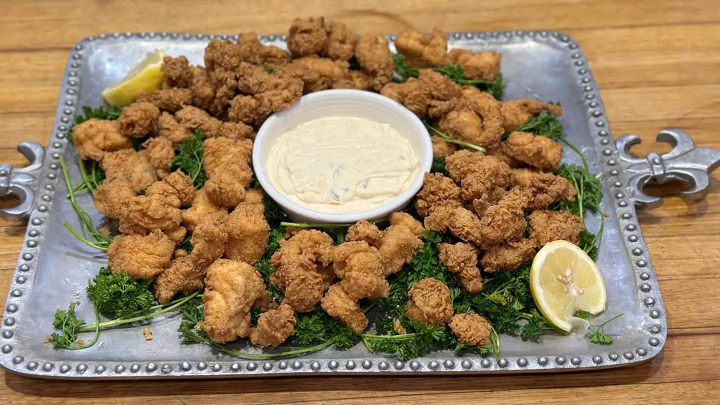
There are plenty of of fish in the sea and as many ways to prepare them. But while species preference may vary, frying remains the most popular culinary method. Sure, grilling, smoking, baking, and blackening have their place; and while we’re aware of the health considerations, fried fish in moderation is a fine way to enjoy your fresh catch. In this piece, we’ll explore not only how to fry fish, but more specifically, how long to fry fish.
Chef Matt Whitney regularly serves the crispy cuisine to anglers and hunters at Gross Savanne Lodge in Lake Charles, Lousiana. Blending culinary arts studies at Sowella Technical College with his traditional Cajun roots, Whitney’s fry game often includes creative presentations, but he shared a handful of fish fry fundamentals that’ll keep anyone on point.
With a fondness for speckled trout, grouper and freshwater catfish (channel cats and blues), Whitney starts at the end by noting how portions depend on the size of the group he’s serving—individually plated entrees, or self-serve nuggets for appetizers or main course.
“I like a thinner filet, because I like the crispier texture,” Whitney said. “If I have to prepare them in advance, I don’t have to worry about them remaining crispy. With thicker pieces, they tend to get a little soggy after a while.
“It also depends on how I’m serving the fried fish. If I’m topping it, I like a whole filet, but if I’m serving it as an appetizer or on a po’ boy, I like to cut it into chunks. The chunks come in handy with larger groups because they tend to stay crispy longer.”
The Prep
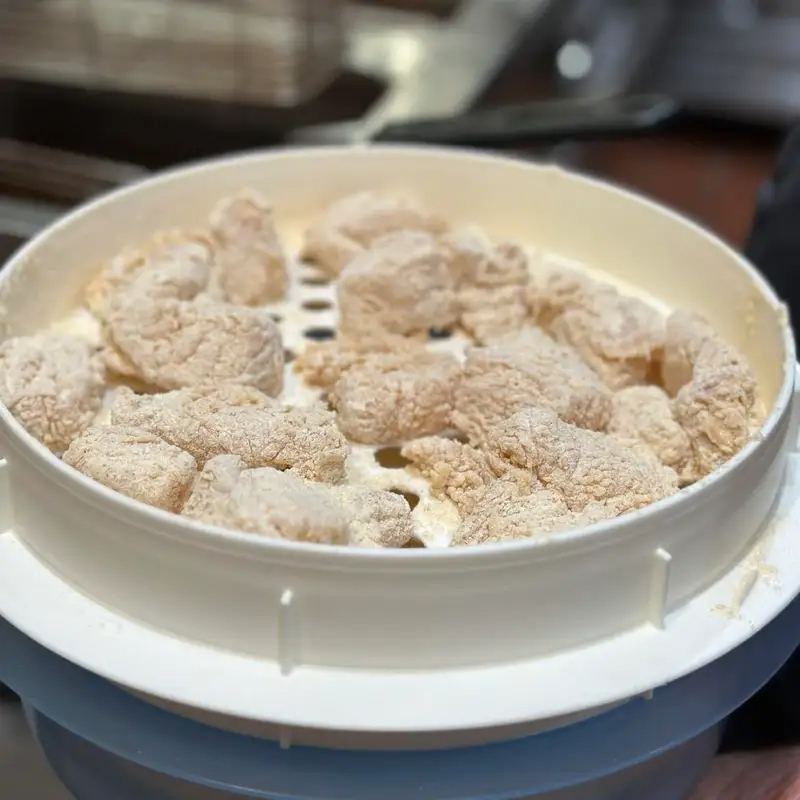
Whitney has dialed in a dependable formula—three parts self-rising flour to two parts corn flour. If his guests want super crispy fish, he goes straight cornmeal.
At the cleaning table, some prefer neatly trimming from the dorsal downward and basically unzipping each filet from the rib cage/gastric cavity, while others just knock the sides off and cut out the ribs and innards. Either way, bag and chill as you go to maximize freshness.
If you catch more than you can eat in one sitting, freezing filets ensures future meals. The USDA says frozen fish or shellfish remain safe indefinitely, but for optimal flavor and texture, freeze cooked fish for up to three months or raw fish for up to eight months.
Freezing filets in water definitely eliminates those air pockets where ice crystals form, but once thawed, you may find water-logged fish taking on a soggy texture. Not necessarily inedible, but this can affect frying efficiency and overall presentation.
Your best bet is to invest in a vacuum sealer. Options range from countertop models to handy compact devices small enough to carry on the boat, or on camping trips.
How Long to Fry Fish
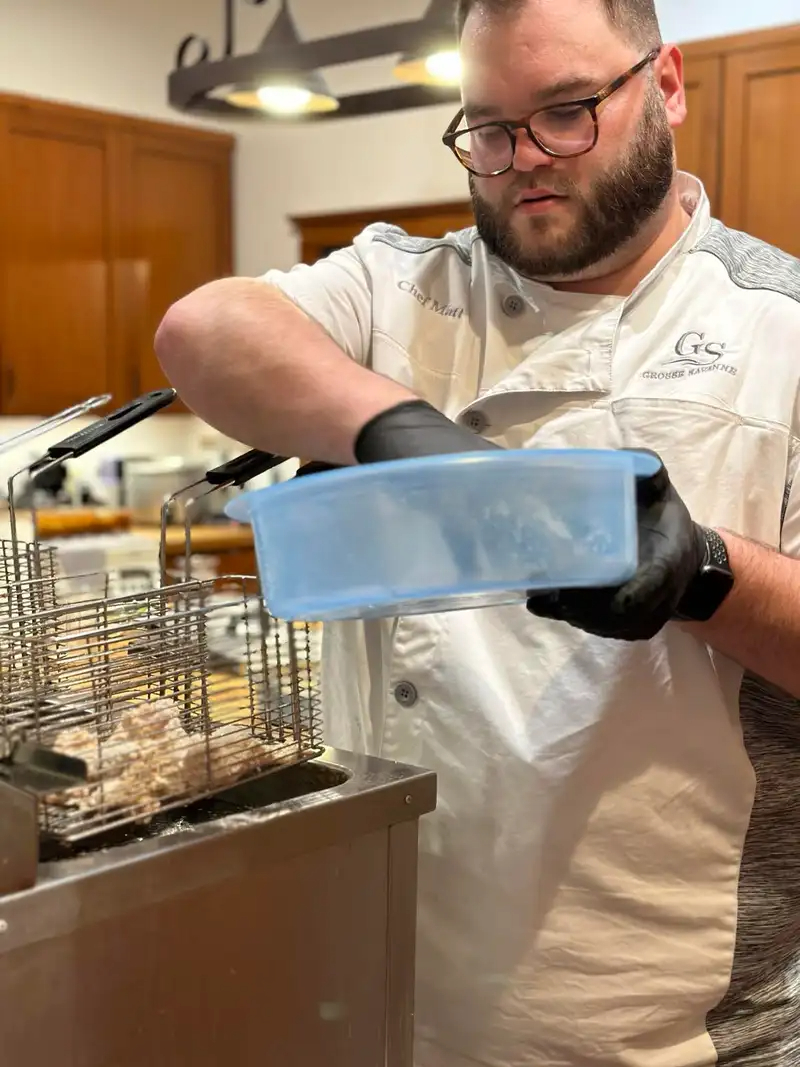
Deep frying should take 5-7 minutes depending on the size of the pieces you’re frying and it shouldn’t need to be flipped. Chef Matt Whitney
It’s a pretty straightforward premise: drop fish into hot oil until it’s crispy. However, details matter.
Oil Choice: The Food Network offers three criteria for selecting a fry oil: neutral flavor, affordability, and a high “smoke point.” The latter refers to the point after which the oil starts to burn. This can leave your fish with a bitter taste, while creating serious kitchen hazards. Oils with smoke points of at least 400 degrees are ideal for fish fries.
“I really like peanut oil, but you have to consider allergies with that one,” Whitney said. “I usually choose canola oil because it cooks really well and it has a clean taste.”
How can you tell when the oil is ready?
“You can use a thermometer and look for at least 350 degrees, but I try to keep it under 400,” Whitney said. “Once you get over 400, your oil starts to have a bad taste.”
Lacking a thermometer, Whitney suggests sprinkling a small amount of your fried fish breading into the oil. When it bubbles, you have the green light.
The Outer Layer: Having tried most every option for his fried fish breading, Whitney has dialed in a dependable formula—three parts self-rising flour to two parts corn flour. If his guests want super crispy fish, he goes straight cornmeal.
“You can do a wet (batter) a dry (breading), you can do an egg wash (with dry breading); everything works really well with fish,” Whitney said. “If you want to taste the fish, going straight into the breading works well.
“I like to add a little bit of the wet batter, because I want to have mustard and different (seasoning) to bring out the flavors.”
Where It Happens: Whitney finds a deep cast iron pot will fry to perfection, but any heavy bottom pot can work. Just dip the fried fish with a spider whisk and lay them on a plate with paper towels.
“You want something deep so you don’t have to worry about excessive grease splashing,” Whitney said. “And preferably nothing too thin, because you want the pot to hold its heat so when you drop in whatever you’re frying, the temperature doesn’t drop too drastically.”
For small batches, Whitney appreciates stovetop frying’s efficiency, but for large groups, you can’t beat a basket-style deep fryer—electric or propane burner.
When’s It Done?: “I use the old-school method: If it’s floating, it’s done,” Whitney said. “I tend to let it go a little longer, because my batter may not be as crispy as I like it.”
Seasoned chefs can effectively operate with their inner timer and visual observations, but for a more precise approach Whitney offers guidelines for how long to fry fish.
“For pan frying, 3-4 minutes on both sides is right. Deep frying should take 5-7 minutes depending on the size of the pieces you’re frying and it shouldn’t need to be flipped. It doesn’t start to come to the surface until it’s almost done cooking, so both sides get cooked.
“A good rule of thumb as to when it is done, is it should flake when broken apart.”
Fry times will vary by species, as the denser meat of amberjack, blacktip shark, or cobia will need a little more time than similar size pieces of lighter fillets like those of speckled trout, flounder, or mangrove snapper. Same rule applies to freshwater species (consider denser northern pike, versus lighter crappie fillets).
Finishing Touches
A few parting thoughts for your next fish fry.
Serve It Up: If you want to dress up your fried fish, you could make Baja fish tacos with avocado cream and pickled red onions, add a seafood sauce with shrimp, crabmeat, and shellfish, or top it with Whitney’s favorite: crawfish étouffée.
Some find a squeeze of lemon or lime juice sufficient, while a splash of your favorite hot sauce sits nicely atop that crispy surface. For simple, elegant presentations, Whitney whips up a jalapeño coconut tartar sauce.
The Smoke is No Joke: Even with an oil of high smoke point, you can still have issues with residual batter/breading. Whitney suggests removing any debris with each round of frying. Let it sit too long and burning pieces will infuse a bitter taste.
Proper disposal: Cooking oils are guaranteed drain cloggers, but tossing “out back” is a big environmental no-no. Whitney saves his bottles and, after used oil cools, he refills the containers and properly disposes.
2 Men Indicted for Illegally Killing, Selling, and Shipping 3,600 Birds, Including Bald and Golden Eagles
Simon Paul and Travis John Branson face charges of conspiracy, unlawful trafficking of bald and golden eagles, and Lacey Act violations
By Katie Hill

A federal grand jury issued an indictment on Dec. 7 in the U.S. District Court of Montana charging two men with multiple felonies related to illegally killing, selling, and shipping parts from some 3,600 birds, including federally protected bald and golden eagles.
Assistant U.S. attorneys Ryan Weldon and Randy Tanner brought 15 charges against the two defendants, Simon Paul and Travis John Branson. Paul and Branson were each charged with one count of conspiracy and one count of violating the Lacey Act. Paul was charged with five counts of unlawful trafficking of bald and golden eagles, and Branson was charged with eight counts of the same offense.
An investigation into text messages and PayPal transactions from 2015 to 2021 revealed evidence that Paul and Branson ran a black market eagle feather ring out of the Flathead Indian Reservation in northwestern Montana, specifically in the towns of Ronan and St. Ignatius. Paul was the alleged “shooter” and “shipper” for Branson, who lived in Washington at the time. Branson traveled to Montana to kill and ship birds elsewhere with Paul.
“During the investigation law enforcement uncovered messages from Branson and others describing the illegal taking of eagles by stating, ‘[O]ut [here] committing felonies,’ and telling buyers he was ‘on a killing spree’ to obtain eagle tail feathers for future sales,” the redacted indictment reads.
The federal Bald and Golden Eagle Protection Act of 1940 prohibits any take of bald and golden eagles without a special permit from the Department of Interior.
According to the indictment, penalties for a first offense of trafficking bald and golden eagles can reach a $5,000 fine and a year in prison. Penalties are elevated for second and subsequent convictions to $10,000 in fines and two years in prison, plus a year of supervised release. Additionally, the penalty for conspiracy is up to five years in prison, three years of supervised release, and a $250,000 fine. And finally, the penalty for violating the Lacey Act could add on up to five years behind bars, three years of supervised release, and a $20,000 fine.
The indictment also mentioned that other parties were involved, although they remained unnamed.
While the indictment reported that Paul lived near Ronan on the Flathead Indian Reservation from January 2019 through March 2021, it is unclear if either Paul or Branson were enrolled members of the Confederated Salish and Kootenai Tribes.
Century-Old Pennsylvania Hunter Has Tagged More Than 100 Deer
After taking an 8-point buck this season, Ray Swingle reflects on a life well lived
By: Bob McNally
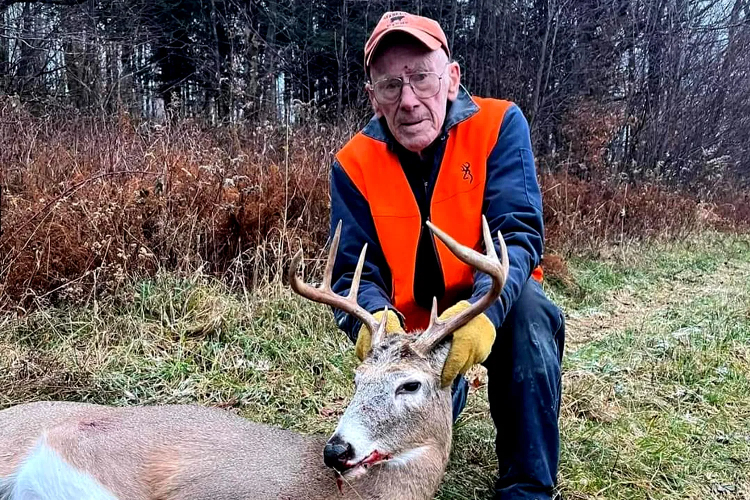
At the ripe age of 100, Ray Swingle is still slaying whitetails. On Dec. 5, while hunting out of an old box blind on his farm in Pennsylvania, Swingle shot an 8-point buck from 75 yards away. By Swingle’s estimation, it’s one of the 100-plus deer he’s killed during his long life in the outdoors.
Swingle was hunting with his grandson-in-law, Mike Mancuso, when he harvested the buck. He shot it with the same trusty Winchester Model 70 Featherweight he’s used for years. The rifle is chambered in .30-06, and he only shoots ammo he handloads himself.
“I’ve shot almost everything with that rifle and caliber,” Swingle tells Outdoor Life. “I still do, because if it ain’t broke, don’t fix it.”
He’s carried that rifle all over North America, chasing elk in Colorado and big-bodied whitetails in the Midwest. He’s also hunted moose in Newfoundland, caribou in Quebec, Dall sheep in the Yukon, and mountain goats in British Columbia. Earlier this year, he and Mancuso went on a deer hunting trip in Missouri for the 10th year in a row. But even for a well-traveled sportsman like Swingle, it’s hard to beat hunting close to home.
“Most of my deer have been on or near the place I’ve owned and worked as a dairy farmer,” says Swingle, whose farm is in Union Dale not far from where he grew up.
Although he’s had to switch to a crossbow recently due to shoulder troubles, Swingle was a dedicated bowhunter for decades. He’s twice pulled off the “triple crown” of Pennsylvania bowhunting—killing a deer, a bear, and a wild turkey with a bow all in the same year.
“When Ray 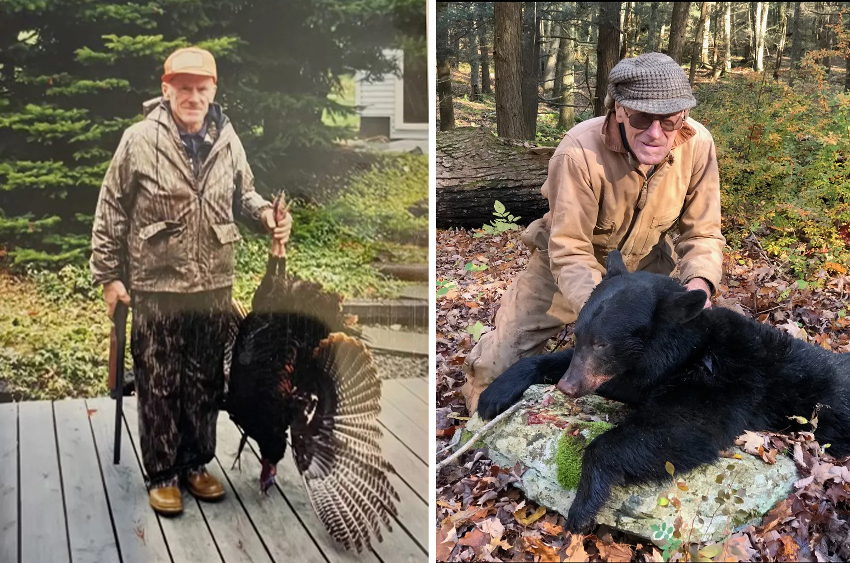 was bowhunting, he took a deer every year with a bow for 30 years,” says Mancuso, who lives on the same farm as Ray but in a different house. “This year he only saw small bucks while hunting [with his crossbow], so he didn’t get one until rifle season opened.”
was bowhunting, he took a deer every year with a bow for 30 years,” says Mancuso, who lives on the same farm as Ray but in a different house. “This year he only saw small bucks while hunting [with his crossbow], so he didn’t get one until rifle season opened.”
Swingle was happy with the 8-point buck he harvested last week. But he says his proudest hunting achievement was the doe he shot in Pennsylvania in 1938.
“That was my first deer, which I legally shot at age 15 with a single shot .22 rifle,” Swingle recalls. “Back then it was lawful to hunt with a .22, and that doe really got my love for hunting going.”
Swingle soon realized the .22 wasn’t enough gun for deer. The following year, he bought himself a .30-30 Winchester and a box of shells for $30.
The hunter celebrated his 100th birthday in October. These days, Swingle usually hunts alone in deer stands that he builds himself, but Mancuso says he considers himself lucky anytime Swingle asks him or his 21-year-old son to come along.
“Ray will be after turkeys this spring again with his crossbow,” says Mancuso. “He’s amazing. He works on the farm daily, and hunts whenever the season is open for whatever game is available.”
RemArms to Close Historic Remington Gun Plant in Ilion, New York
After 195 years, RemArms announced it was shuttering operations at its Ilion factory, affecting hundreds of employees
By: Katie Hil

The longest-operating gun manufacturing plant in the country will close its doors in March after 195 years of making Remington guns. RemArms, the reimagined brand offshoot of the Remington every hunter and shooter has known for two centuries, announced the change in a letter to union leaders Thursday, reports the Utica Observer-Dispatch.
“I am writing to inform you that RemArms, LLC has decided to close its entire operations at 14 Hoefler Avenue, Ilion, NY 13357,” the letter reads. “The Company expects that operations at the Ilion Facility will conclude on or about March 4, 2024. The Company did not arrive at this decision lightly.”
The decision is noteworthy for Remington fans, but not altogether surprising given the recent turmoil at Big Green. The Remington Outdoor Company filed for bankruptcy in July 2020, laying off 585 employees without severance benefits and halting operations in Ilion. In fall 2020, an investment firm named The Roundhill Group purchased the manufacturing plant, along with a second Remington facility in Tennessee that made handgun barrels, and renamed the company RemArms. (Meanwhile Ruger bought Marlin, which had been under Remington ownership since late 2007. Remington Ammunition is now a separate company from RemArms firearms.)
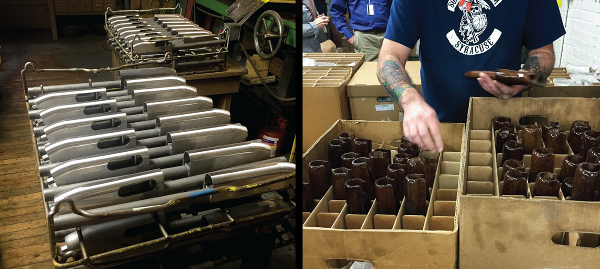
In May 2021, 230 RemArms employees returned to the Ilion plant to continue operations. The company was focused on mass-producing Model 870 shotguns and Model 700 rifles, and restocking shelves before hunting season rolled around, director of product management Adam Ballard told Field and Stream at the time. (Outdoor Life has since tested the RemArms 870 Fieldmaster, which has replaced the RemArms 870 Express.)
Around 300 employees clocked in at the Ilion plant every day, making it the largest employer in rural Herkimer County, New York. Many of those employees are represented by the United Mine Workers of America. The UMWA negotiated on behalf of the employees during the 2020 bankruptcy, resulting layoffs, and acquisition. UMWA international president Cecil E. Roberts released a statement in response to the news.
“It is extremely disappointing to hear that RemArms LLC is closing its Ilion plant,” he wrote on Thursday. “The workers in Ilion enabled RemArms to rise from the ashes of the Remington Arms bankruptcy in 2020-21. Without these workers and their dedication to producing the best firearms in the world, this company simply would not exist … This announcement by the company is a slap in the face to all of them. The timing adds insult to injury for those affected. Merry Christmas from RemArms.”
A RemArms representative did not immediately respond to a request for comment. An auto-reply email to Outdoor Life stated, in part, “RemArms is excited to expand our facilities in Georgia, a state that not only welcomes business but enthusiastically supports and welcomes companies in the firearms industry.”
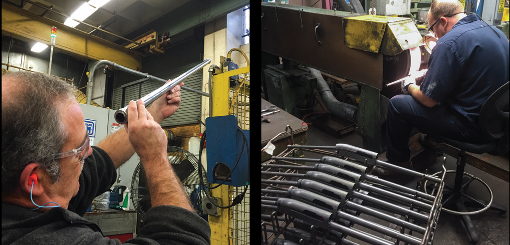
The statement was part of a November 2021 press release from Georgia governor Brian Kemp’s office announcing that RemArms would be moving its global headquarters to LaGrange, Georgia, and building an advanced manufacturing facility there, as well.
Eliphalet Remington II founded Remington as a rifle barrel manufacturer in 1816; the Ilion plant became operational in 1828 and produced thousands of firearms for the Union Army in the Civil War. The company also produced some of the nation’s first commercially available typewriters in Ilion from 1874 to 1886, although it is unclear whether they were manufactured in the same plant.
“The Ilion facility and its workforce truly remain a valued asset to the company,” then-Remington CEO James Marcotuli told shooting editor John B. Snow in 2016, during the gunmaker’s 200th anniversary. “There’s a ton of experience and knowledge there. We’ve been producing Remington products in Ilion since 1816. In that time, we’ve produced more than six million Model 700s, nearly four million Model 1100s, and 11 million Model 870s.”

